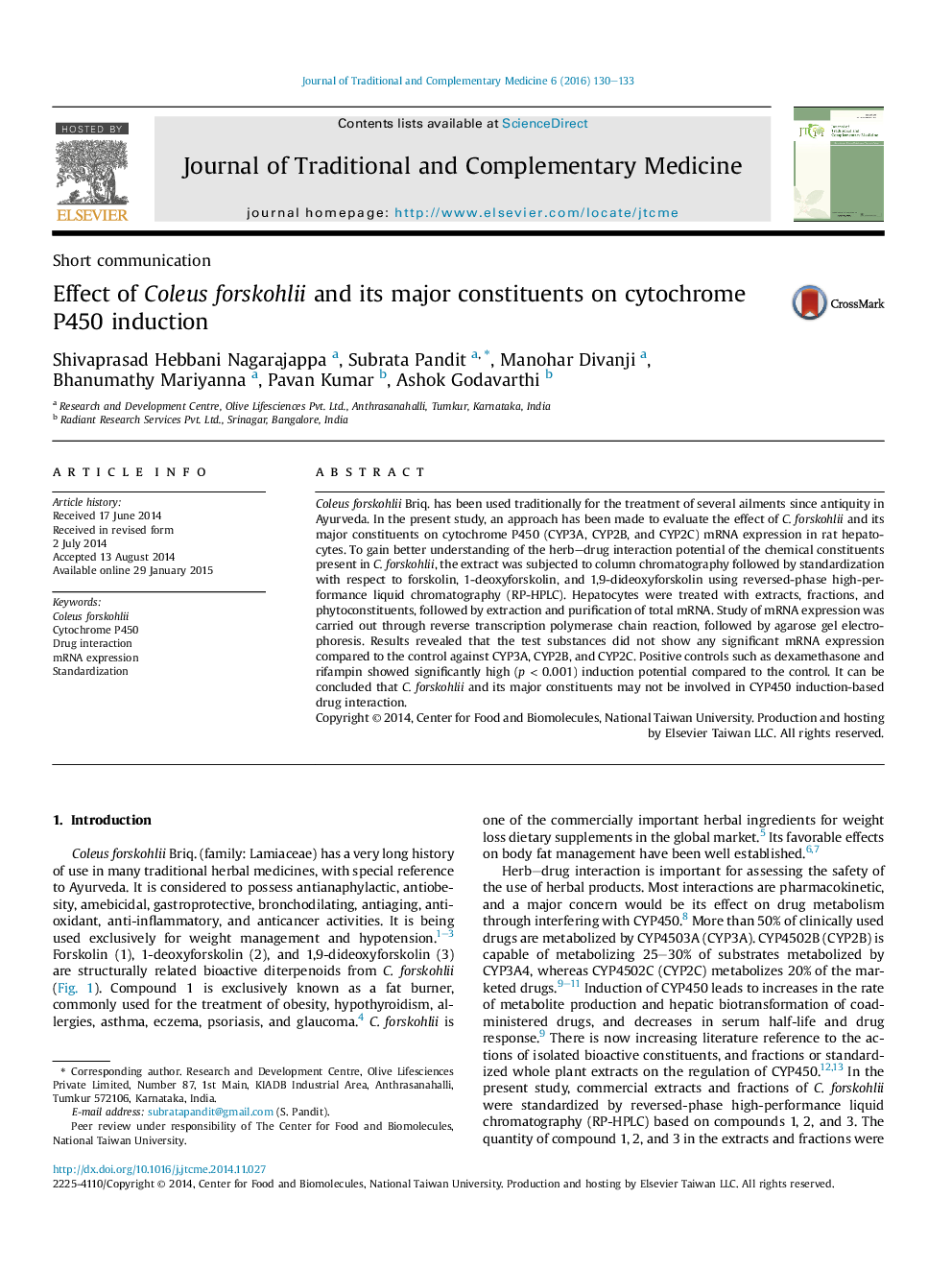| Article ID | Journal | Published Year | Pages | File Type |
|---|---|---|---|---|
| 3099737 | Journal of Traditional and Complementary Medicine | 2016 | 4 Pages |
Coleus forskohlii Briq. has been used traditionally for the treatment of several ailments since antiquity in Ayurveda. In the present study, an approach has been made to evaluate the effect of C. forskohlii and its major constituents on cytochrome P450 (CYP3A, CYP2B, and CYP2C) mRNA expression in rat hepatocytes. To gain better understanding of the herb–drug interaction potential of the chemical constituents present in C. forskohlii, the extract was subjected to column chromatography followed by standardization with respect to forskolin, 1-deoxyforskolin, and 1,9-dideoxyforskolin using reversed-phase high-performance liquid chromatography (RP-HPLC). Hepatocytes were treated with extracts, fractions, and phytoconstituents, followed by extraction and purification of total mRNA. Study of mRNA expression was carried out through reverse transcription polymerase chain reaction, followed by agarose gel electrophoresis. Results revealed that the test substances did not show any significant mRNA expression compared to the control against CYP3A, CYP2B, and CYP2C. Positive controls such as dexamethasone and rifampin showed significantly high (p < 0.001) induction potential compared to the control. It can be concluded that C. forskohlii and its major constituents may not be involved in CYP450 induction-based drug interaction.
Graphical abstractFigure optionsDownload full-size imageDownload as PowerPoint slide
